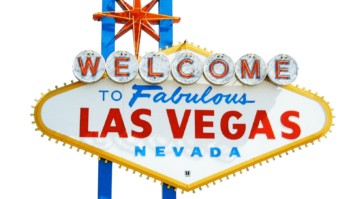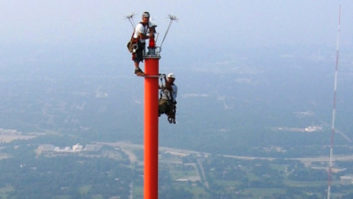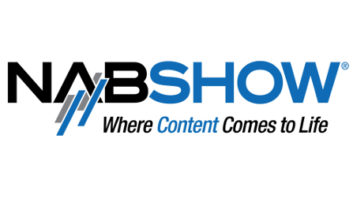With nostalgia for the late 20th century all the rage of late, here’s another piece of it for you: Do you remember the satisfaction of being able to place a call to your local TV station, bank or phone company to hear the current time and local temperature?
For Bruce Robertson, “time and temp” became his life, forging a path spanning three decades to today, which finds him offering a turnkey on-air weather service to radio stations known as WeatherMonster.
“I called the time and temperature lines, growing up near Buffalo, constantly as a kid,” he said. “I always thought of it as radio on the phone.”
In the mid-1980s, not long after college, he was the news director at heritage WHOT(AM/FM), which were simulcasting at the time in Youngstown, Ohio. His tenure included a historic weather event in the Mahoning Valley region: an F-5 tornado on May 31, 1985, that caused devastation in a path from Niles, Ohio, to Wheatland, Pa., not far from where Robertson lived.
“I lie awake at night still thinking about that day,” he said.
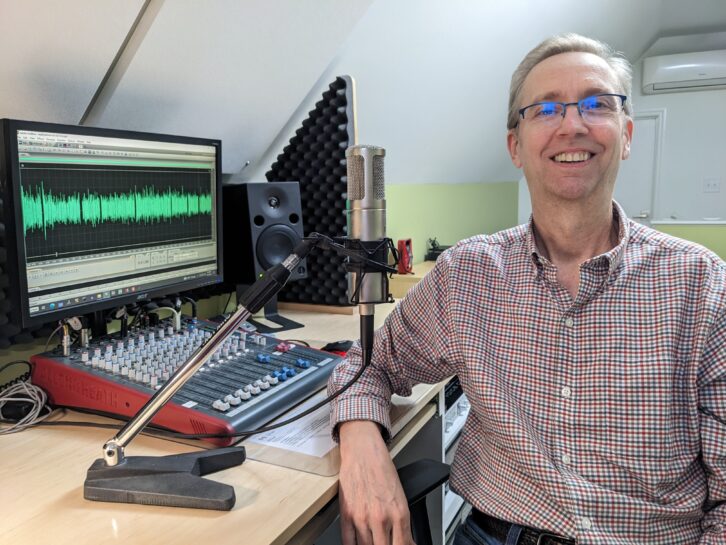
Growing business
In 1991, seeking a change and looking to combine his radio voice and his interest in weather, Robertson started RTI Media out of his home.
Installing a studio in one’s residence was uncommon at the time. Robertson wanted a high level of production quality and was helped by engineer Wes Boyd, whom he knew from WHOT. The studio later went with Robertson when he moved to the Raleigh, N.C. area, where he resides today.
RTI’s original purpose was to provide telephone auto-attendant and on-hold messages for businesses, including custom scriptwriting. These would be played on hardware devices made by RTI and installed at each business location.
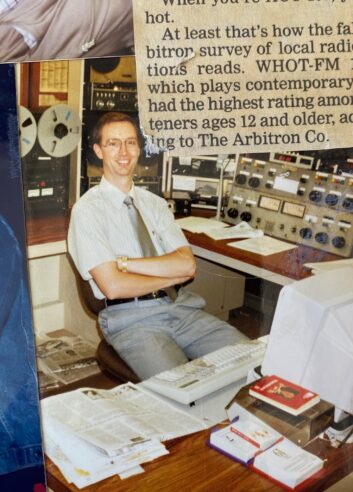
RTI’s telephone on-hold audio customer base grew into the thousands — “every state except Hawaii,” Robertson said — with customers ranging from hotels to nudist colonies. “What people do for a living is always fascinating.”
This led to a second venture, the telephone time and temperature business, launched in the 1990s.
One might expect that interest in automated telephone time and temperature had started to fade by then, but Robertson discovered otherwise when he began working with a client in Owensboro, Ky. A local business had offered a time-and-temp service previously but it had been discontinued months before. Seeking to revive it, another local company contacted RTI.
As a test, Robertson set up a prototype of a time and temp device his company was developing on the phone lines in Owensboro.
He was astonished to find that the phone number for the service received 14,000 calls in the first month. People clearly still valued knowing the time and temp.
This led to the introduction of RTI’s Time & Temperature division, first manufacturing hardware to take time and temp calls at customer premises and later transitioning to server-based software that answers the calls. “It’s essentially time and temperature as a service,” he said, adding that the approach is superior to using on-site devices that rely on a customer’s broadband.
The audio content consists of audio files recorded by Robertson himself — more than 2,000 sound files, with every possible temperature, humidity percentage, wind speed, and common weather phrases to match current weather data.
Between RTI and its partners, that service still averages more than 1 million calls per month in more than 2,000 markets. The busiest days come twice a year when most of the United States resets its clocks. He calls these the Super Bowls of time and temperature.
Today, while you can set your smartphone to show the local temperature on your lock screen, old habits die hard.
“The use of dialing a number for time and temperature shows that, for many people, new forms of information come along and you use them, but you do not abandon what you’ve always relied upon,” said Robertson.
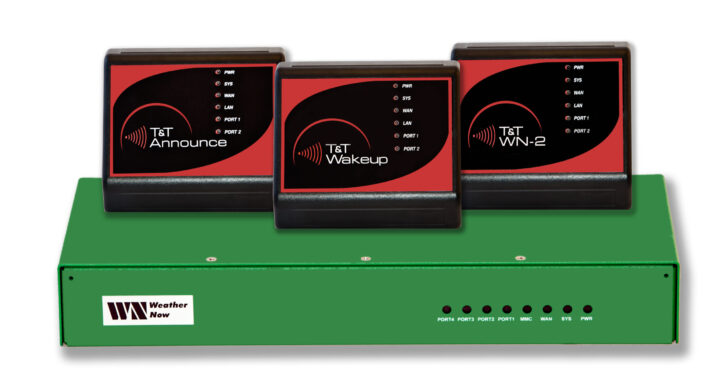
Returning to radio
Expanding RTI’s weather-related service to radio became Robertson’s objective.
Several stations were clients for time and temperature, including WGSM, a low-power FM station with a religion format in Madisonville, Tenn. “They asked me to provide an audio file of the same content you’d hear if you dialed their time and temp line over the phone,” he said.
It took a while for his vision to be realized, but in 2013, Robertson formed WeatherMonster to bring RTI’s services to the radio market.
Its website states: “When your station is unattended, try our unique audio platform providing broadcast quality automated weather audio for radio stations, community broadcasters, LPFM, ad insertion in streams, internet radio, radio reading services and more. Real human voices with personality — no AI robots!”
Today, the WeatherMonster service is cloud-based and hosted on Microsoft Azure. Its central application produces for each client station a ready-to-air audio file, with options for a customizable station tagline and background music bed, insertable into the user’s broadcast automation system. Timing and numerous other features can be customized in the application.
“It’s all real voices, humans talking to humans,” Robertson said, noting that the company does not use synthetic or AI-based voices.
RTI aims to make the inserts — “the current temperature is 55 degrees and the wind is out of the south at 7 miles per hour” — sound as natural as possible. He employs two software programmers who have been integral in developing the application.
“Within four seconds, based on a unique link for the station, the application grabs hourly weather observations and updated forecast data, and adds a background music bed to the voice. And the file downloads onto their network,” Robertson said.
Gary Hoppe, operations manager of Tri-County Broadcasting in St. Cloud, Minn., said, “We found the WeatherMonster searching for an audio weather service. We liked the fact that it’s a human voice and its phrasing is well thought out. A unique concept.”
He began using WeatherMonster on classic country outlet WVAL(AM) in Sauk Rapids about a year ago and has added it on standards-formatted WMIN and sports WBHR, both of which are AMs with FM translators in Sauk Rapids.
Each of the stations had particular requirements for its weather.
“WVAL serves a farming community, so an accurate forecast updated every hour with its own jingle bed was a must,” Hoppe said.
“WBHR’s weather updates needed to be exactly 30 seconds and updated three times an hour in the morning. Bruce has a can-do attitude and together we have found solutions.” Hoppe is now working with Robertson to craft updates for a new morning show on rocker WHMH(FM).

“The idea here is to give the station something to make money with,” Robertson said. He wants the service to be seen as a revenue generator for stations, not an expense.
“For instance a station might equip a client with external temperature sensors to feed WeatherMonster, to air inserts that say, “The current temperature at Smith Automotive Group is 72 degrees.”
While WeatherMonster serves commercial radio stations, RTI also created a brand serving religious-formatted stations called Sonshine Weather.
Regardless of format, with many stations in the country running on automation for some or all of the day and perhaps airing pre-recorded forecasts that can become outdated quickly, Robertson sees an opportunity for RTI to provide up-to-date weather information with a friendly presentation, either 24/7 or just nights and weekends.
“Ultimately in radio, to me, only the stations truly serving the community will sustain themselves. Weather and radio have always gone hand in hand, and what better way to gain trust from your audience than with a local forecast that’s continuously updated?”
But with tools that use artificial intelligence now on the market to deliver weather and other content, why should a radio station use WeatherMonster?
“The short answer is that AI can’t do the same thing,” he said.
“In my view, having computers speaking to your listeners every day does not meet the definition of being in the ‘communications’ business. That is some other business — perhaps the business of Spotify or others like them. Not local radio.”
He said the impact of AI on RTI’s business, and whether he’ll have to adjust his services, remain to be seen.
“Ultimately, the decision lies with listeners. Will they be content to listen to simulated humans instead of the real thing? Perhaps we should consider turning to AI for things humans can’t do, not things they already do. As our company continues to innovate and add features to our services, we are reminded that AI may never have the creativity — and ambition to put that creativity to work — the way humans can.”






